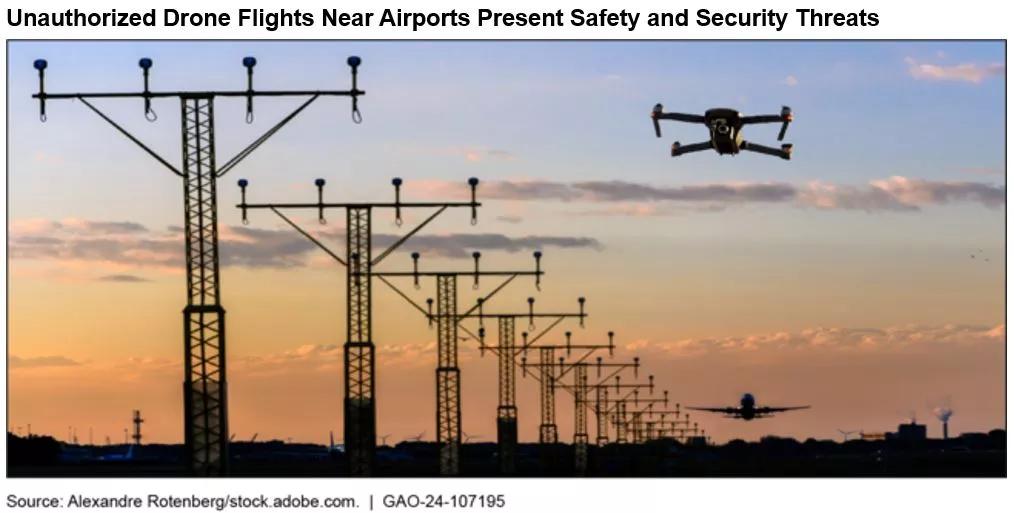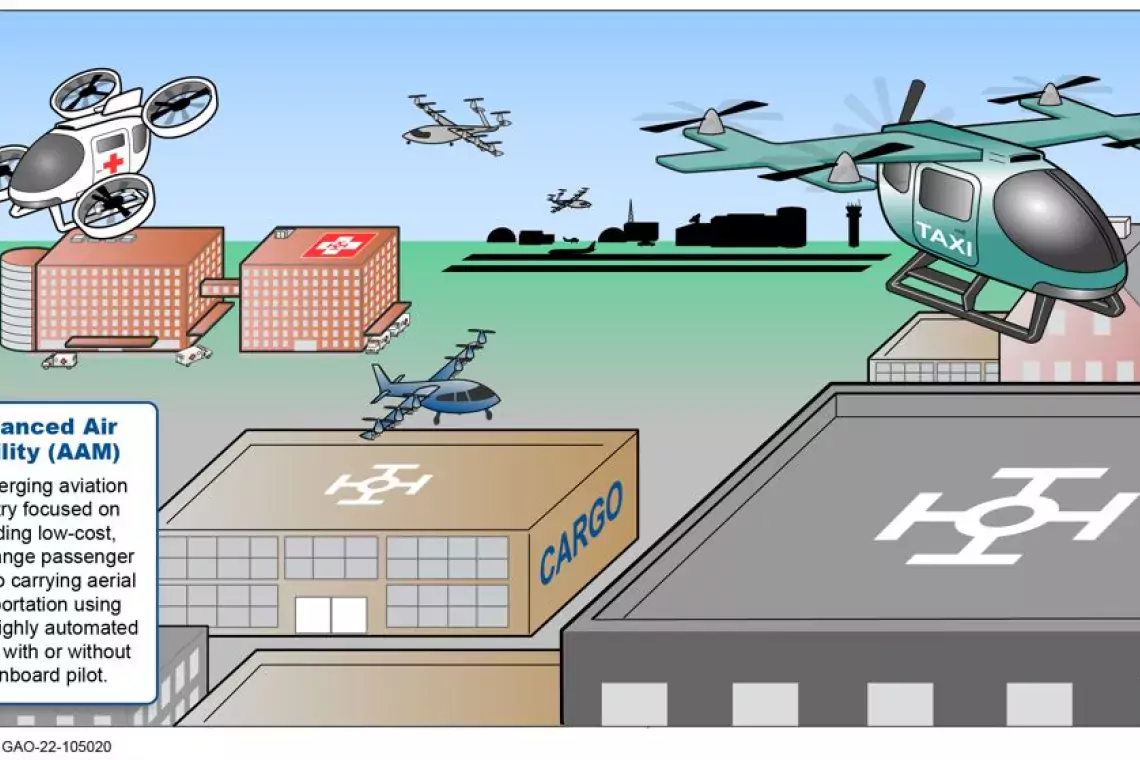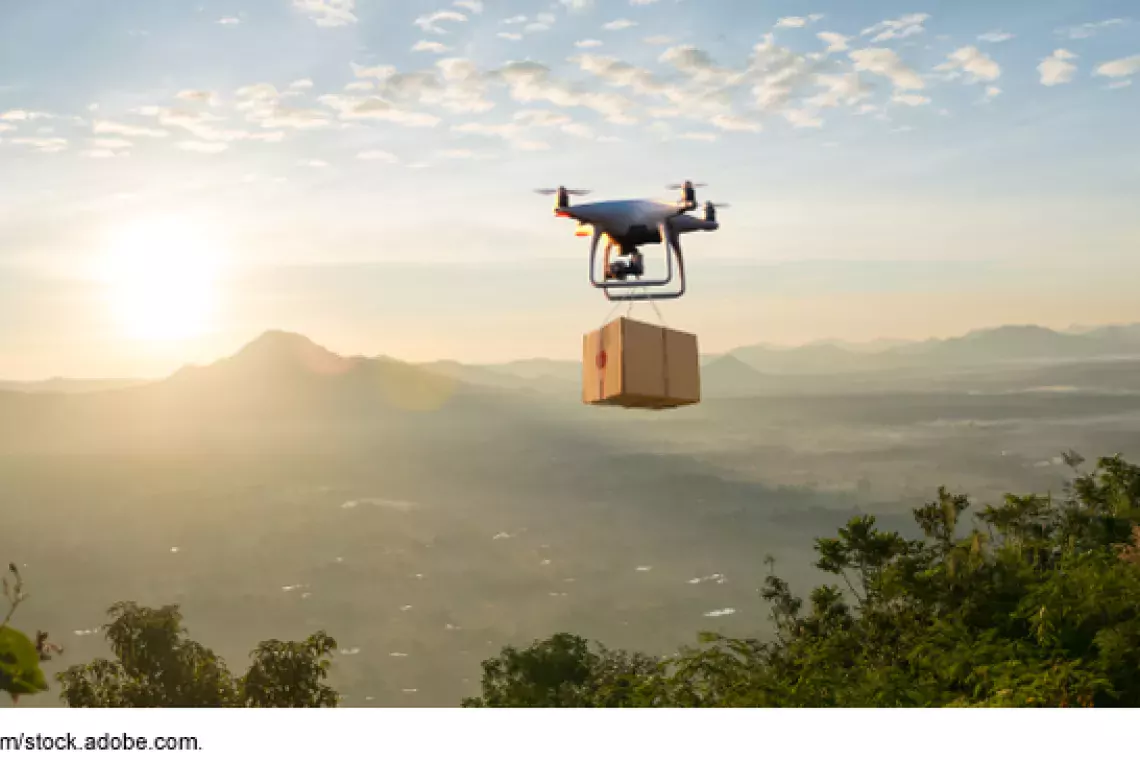As Drones Take Flight, So Do Concerns About Safety
The number of drones in the U.S. has grown substantially in the last few years and will soon reach nearly 3 million. Drones are currently being used for business, research, education, and recreation—for everything from lighting up the skies in firework-like displays and delivering packages and meals to surveying previously unreachable historic sites and much more.
Now that we’ve figured out so many practical uses for drones, how can the government identify those flying where they shouldn’t?
Today’s WatchBlog post looks at two recent reports about the safety hazards drones can pose, especially near airports, and the challenges with identifying them while in fight.
Image

Keeping drones away from airports and other unauthorized areas
In recent years, a significant number of drone sightings have been reported near airports—more than 2,000 since 2021. These incidents include those at major airports and have occurred nearly every day. As many as 60 drone incidents have caused pilots to take evasive actions, including four that involved commercial aircraft.
Whether intentional or by mistake, unauthorized drone flights around airports can result in flight delays, as well as serious safety and security threats to travelers. For example, in July 2022, flight operations were halted at Reagan Washington National Airport (just outside of D.C.) due to a drone sighting. Similarly, in June 2023, an unauthorized drone caused a 30-minute ground stop at Pittsburgh International Airport.
Local law enforcement agencies on the ground are generally able to make first contact with drone operators if there is an incident. But federal law enforcement can also help. In addition, the Federal Aviation Administration has tested technologies to detect drones and prevent them from entering spaces where they shouldn’t fly. The FAA is also pursuing several efforts to allow more drone flights in authorized spaces. But the agency acknowledged that it doesn’t fully know the effects of drone detection technologies on its other drone efforts. For example, it had not assessed how new counter-drone technologies would impact the development of FAA’s drone traffic management system. As a result, we recommended that FAA take steps to ensure its ongoing efforts include assessing how drone detection and mitigation could affect authorized uses of drones.
We also recommended that Congress take action on this issue and, as appropriate, to amend authorities for federal and local entities with respect to drone detection and counter-drone operations at airports.
License and registration, please… What happens when drones fly where they shouldn’t?
Drones don’t have license plate numbers. But they are generally required to have Remote ID. This technology is intended to help law enforcement identify and investigate unauthorized activities.
How does Remote ID work? Known as “digital license plates,” Remote ID transmits certain identification, location, and performance information from a drone to people on the ground and other airspace users. Remote ID could, for example, help law enforcement identify operators flying drones that interfere with airport operations.
As described above, local law enforcement is often the first to respond to unauthorized drone activity. But in our new report, we found that one of the biggest challenges faced by law enforcement when responding to unauthorized drone activities is locating the operator.
Even if a drone has Remote ID, local law enforcement may not have the technology or resources needed to access this information. FAA has worked with local law enforcement groups to provide resources on how they can use drones for their work. But FAA hasn’t developed resources to support law enforcement’s use of Remote ID in their efforts to enforce drone-related laws. Tribal, state and local law enforcement that we contacted for our report told us they didn’t know much about Remote ID or how it could be used in their investigations.
FAA should do more to help local law enforcement. As a result, we recommended steps for doing so. Learn more about these recommendations and our work on Remote ID by reading our full report.
- GAO’s fact-based, nonpartisan information helps Congress and federal agencies improve government. The WatchBlog lets us contextualize GAO’s work a little more for the public. Check out more of our posts at GAO.gov/blog.
GAO Contacts
Related Products

GAO's mission is to provide Congress with fact-based, nonpartisan information that can help improve federal government performance and ensure accountability for the benefit of the American people. GAO launched its WatchBlog in January, 2014, as part of its continuing effort to reach its audiences—Congress and the American people—where they are currently looking for information.
The blog format allows GAO to provide a little more context about its work than it can offer on its other social media platforms. Posts will tie GAO work to current events and the news; show how GAO’s work is affecting agencies or legislation; highlight reports, testimonies, and issue areas where GAO does work; and provide information about GAO itself, among other things.
Please send any feedback on GAO's WatchBlog to blog@gao.gov.




